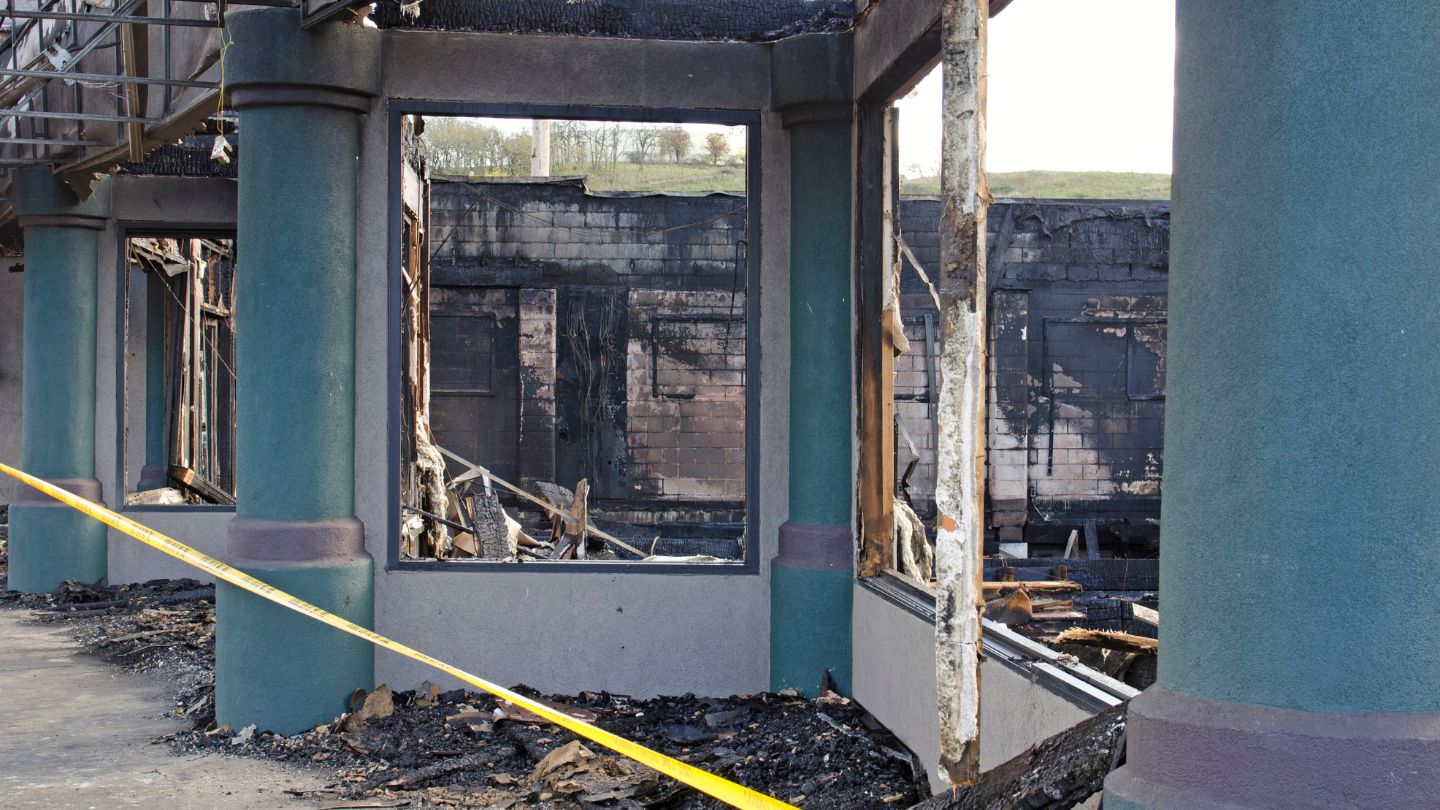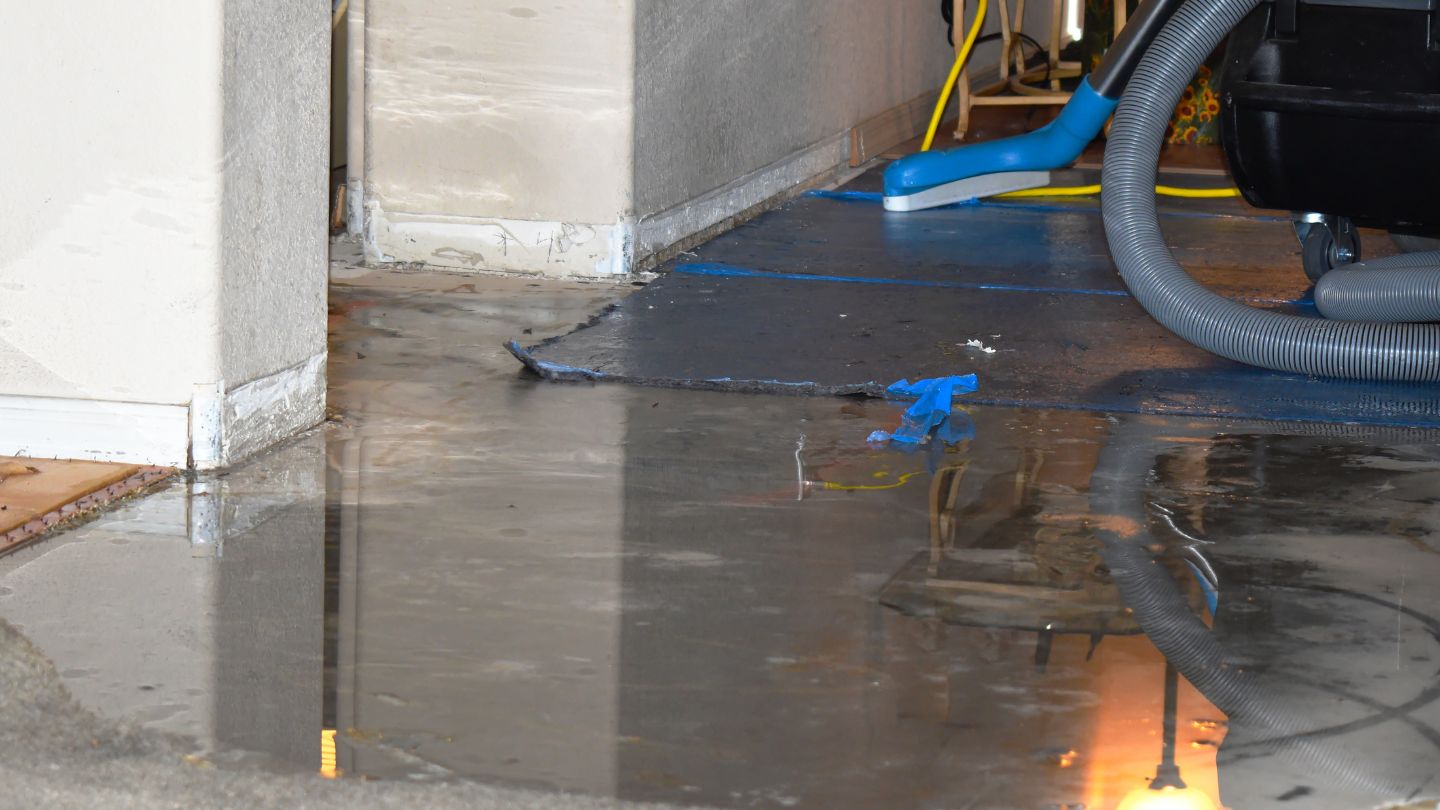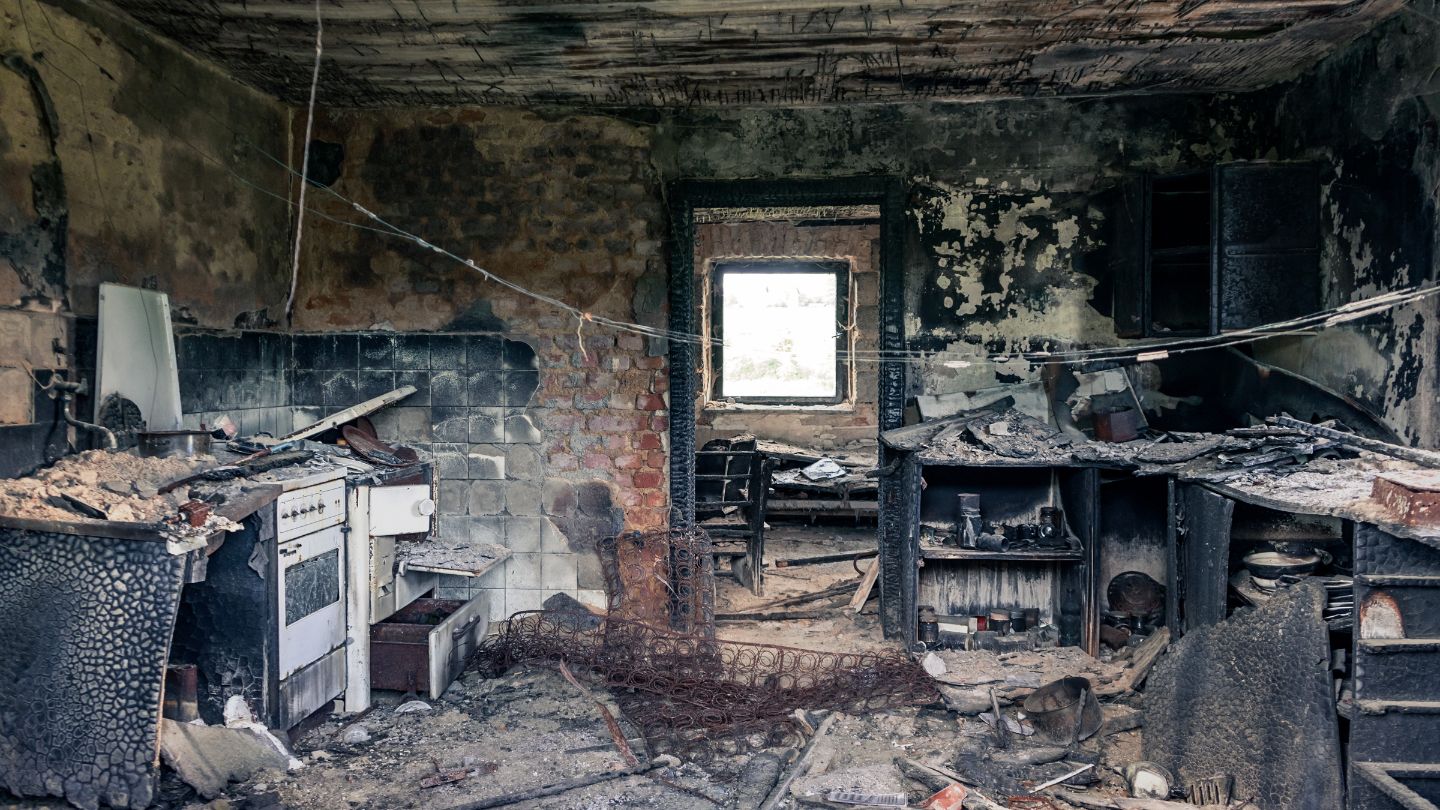The fire damage restoration process involves assessing the damage, securing the property, removing water and debris, and repairing structures. It’s essential for restoring a property to its pre-fire condition. Knowing what the fire damage restoration process entails can help you understand what to expect.
Key Takeaways
- The fire damage restoration process involves critical steps such as assessment, securing the property, water removal, and structural repairs to restore the property to its original state.
- Effective documentation of damages and prompt communication with insurance companies are vital for a smooth claims process following fire damage.
- Choosing a reputable restoration company with proper certifications and expertise ensures high-quality restoration services and effective management of the restoration process.
Understanding the Fire Damage Restoration Process

The restoration process following fire damage is an intricate procedure that encompasses cleaning up, repairing, and bringing properties back to their pre-fire condition. This aims to prevent any harm while trying to salvage as much property as possible. The fundamental stages in this operation involve undertaking a fire damage restoration job, which includes examining the extent of the damage, securing the premises against additional losses or risks, eradicating water buildup caused by firefighting efforts, clearing away rubble, and carrying out precise structural repairs.
It’s essential to employ a skilled fire damage restoration company for effective remediation of damages inflicted by fires and ensuring that the property remains secure from future fires.
Initiating such a meticulous process involves:
- Conducting an extensive assessment of the destruction
- Protecting the site against subsequent losses or dangers
- Extracting accumulated water
- Removing debris
- Implementing thorough structural refurbishment
- Advancing with recovery operations
Every stage plays a critical role in guaranteeing that not only is normalcy restored, but also safety is reinstated so occupants can return safely.
Initial Assessment and Safety Evaluation
The fire damage restoration process begins with an initial assessment, which is critical for evaluating safety and the extent of the work necessary. This step includes a comprehensive safety evaluation to ensure there are no risks that might cause injury due to unstable conditions. Experts in restoration will meticulously examine the area while steering clear of any electrical devices, confirming that it’s safe to proceed into the property. The purpose here is not only to pinpoint potential hazards but also to determine the extent of fire damage and devise a customized plan for restoring the affected areas.
As part of this crucial phase, professionals extend their examination beyond just obvious damages. They scrutinize adjacent spaces as well in search of both apparent and concealed destruction caused by fire. They document all forms of damage encountered, conduct specific tests for smoke and soot presence to support creating an accurate timeline, and provide a cost estimate required for completing the entire restoration process effectively. These fundamental actions set up a solid groundwork from which specialists can accurately evaluate what’s needed for a thorough recovery from fire impacts.
Securing the Property
To safeguard the property from additional loss and guard against vandalism following a fire, it is crucial to secure it promptly. Restoration companies typically undertake this task by boarding up windows and doors as well as potentially erecting fencing to boost security measures. Such precautions are instrumental in maintaining the safety of the premises and minimizing Harm throughout the restoration process.
Water Removal and Drying

Following a fire incident, it is vital to promptly address water extraction in order to thwart secondary issues like the development of mold and the decay of structural elements. The process of extinguishing fires typically results in an accumulation of excess water, which must be dealt with swiftly.
At this phase, it is necessary to employ specialized machinery designed for efficiently removing water and dehumidifying the premises.
Water Extraction Techniques
The process of fire damage restoration significantly involves the removal of water, utilizing advanced methods and robust extraction machinery to effectively draw out substantial amounts of water from different areas.
Such a procedure not only accelerates the drying time but also reduces the potential additional harm that can arise due to extended exposure to moisture.
Drying and Dehumidification
After water removal, it’s critical to engage in drying and dehumidification processes to avert mold proliferation and additional harm. To sustain reduced levels of humidity and ensure the complete desiccation of impacted zones, one must employ both dehumidifiers and air movers.
Carrying out this phase guarantees the elimination of any lingering dampness, thereby protecting the premises from subsequent complications.
Debris Removal and Cleanup
Debris removal and fire cleanup are critical steps in the fire damage restoration process. The primary goals are to remove hazardous materials, clear and dispose of debris, and document the cleanup process. This stage involves managing hazardous materials to reduce health risks associated with fire, smoke, soot, and other debris.
Immediate cleaning and sanitization are crucial to avoid permanent damage to salvageable items.
Identifying and Removing Damaged Items
Throughout the process of removing debris, items that have sustained damage are evaluated and cataloged, ensuring they’re distinguished from those that can be saved. This careful documentation involves capturing photographs and compiling a comprehensive list of the impacted items.
Components deemed excessively damaged to warrant restoration are categorized as unsalvageable. These components are then discarded appropriately to avoid any additional risks or hazards.
Soot and Smoke Cleanup
The process of eliminating soot and smoke residue requires extensive hands-on work to remove deposits from various surfaces. It’s critical that this cleaning is done meticulously to avert long-lasting stains and damage caused by soot. Professionals in the field of restoration employ an array of sophisticated tools and techniques, which include dry-cleaning sponges, chemical sponges, and heavy-duty vacuum cleaners for efficient removal of soot and mitigation of smoke effects.
A variety of porous materials can undergo discoloration due to smoke exposure, with noticeable smoke marks on items such as:
- Plastics
- Countertops
- Tiles
- Porcelain fixtures
- Wood floors
It’s imperative to conduct duct cleaning within HVAC systems when they have been impacted by residues from both soot and lingering odors caused by fire-related incidents.
Following the cleansing phase for surface areas affected by these substances, they are subsequently rinsed using pure warm water, followed promptly with thorough drying steps. This ensures the complete absence of residual matter left behind after treatment.
Structural Repairs and Reconstruction
The process of restoring a property that has suffered from fire damage includes numerous concluding actions.
- Carrying out structural repairs and rebuilding work
- Implementing minor repairs such as substituting drywall materials
- Engaging in major renovations, including the reconstruction of areas that sustained significant harm
The objective is to confirm that the building is structurally stable and secure for use.
Controlled demolition might be required to eliminate structures beyond repair to make way for new construction.
Repairing Structural Elements
Restoring structural components following fire damage entails reconstructing roofs, substituting electrical systems, and mending compromised drywall, flooring materials, and other interior parts. Typical materials utilized for such restorations include drywall, plaster, tiles, carpeting, hardwood floors, and laminate surfaces.
Electrical, Plumbing, and HVAC System Repairs
Structural restoration includes:
- Entirely reconstructing roofs
- Substituting electrical systems
- Changing out the plumbing system
- Swapping HVAC systems
It is crucial to conduct comprehensive testing of HVAC systems to verify that every part operates correctly following fire damage.
Cleaning and Sanitizing
It is critical to cleanse the property thoroughly following fire damage in order to remove hazardous toxins and guarantee a secure living space. A range of cleaning strategies, comprising unique cleaning approaches, are utilized to return items back to their condition before the fire.
Industrial air scrubbers and fogging devices are deployed to eradicate smoke odors, and deodorizing compounds are used to address any residual smoke scents.
Odor Removal and Deodorization
During the smoke restoration process, industrial air scrubbers and fogging machines are utilized to successfully expel odors. Deodorizing substances are used to eradicate persistent smoke scents and guarantee a habitable and secure atmosphere. This procedure also involves the elimination of smoke to improve air quality.
Final Cleaning Procedures
In the restoration process following a fire, the concluding phase involves an exhaustive inspection to confirm that all areas have been properly sanitized and set in order. Unaffected walls and ceilings are meticulously cleaned and sanded in preparation for priming prior to painting, guaranteeing that the property is returned to the condition it was in before experiencing fire damage.
Working with Your Insurance Company
It is crucial to submit a claim for fire damage promptly because the majority of insurance policies require immediate notification. To bolster your case, it’s important to thoroughly document the property damage using detailed photographs and videos.
Maintaining open and clear communication with your insurance company can greatly improve the speed and effectiveness of the claims process.
Documenting the Damage
Securing an official report of the home fire is essential to support your insurance claim. Meticulous records of the damages, featuring photographs and comprehensive inventories of damaged items, facilitate a seamless claims process.
Should there be a denial or contention over the claim, homeowners possess legal avenues through which they can contest the decision made by their insurer.
Filing and Managing Claims
It is crucial to grasp the insurance claims process and have all necessary documentation in order to successfully file claims for restoration costs coverage. Ensuring clear communication and providing comprehensive documentation of damage can expedite the claims process, thereby assisting in obtaining the required funding for restoration.
Choosing the Right Fire Damage Restoration Company
It is essential to engage a trustworthy fire damage restoration company for an efficient and seamless restoration process after experiencing fire damage. When selecting such a company, it’s important to evaluate their credentials, proficiency in managing fire damage, and standing for providing outstanding client support.
The level of specialized education and the breadth of experience that professionals have with different kinds of fire and smoke damage play a crucial role in determining how successful the restoration services will be.
Evaluating Expertise and Certifications
Seek out firms that possess certification from the IICRC, as this shows they comply with industry benchmarks and participate in continuous education. Certifications awarded by reputable institutions boost the trustworthiness of a restoration firm and guarantee that their experts follow established norms within the field.
The expertise to manage different kinds of fire damage is pivotal for determining how successfully restoration services are delivered. Opting for qualified professionals is essential when aiming to secure excellence and adherence to regulations in the domain of fire damage restoration.
Customer Service and Support
Customer service of exceptional quality plays a vital role in the fire damage restoration process, fostering trust between those affected by fire damage and the companies that offer damage restoration services. Signs of commendable customer service include rapid response to inquiries and clarity in all forms of communication.
Opting for certified professionals guarantees efficient handling of communications while also providing clients with well-informed advice throughout the entire restoration process. This is delivered by an adept restoration team composed of seasoned experts who are equipped to provide top-tier professional restoration assistance.
Wrapping It Up
Understanding the fire damage restoration process is crucial for anyone who’s faced the devastation of a fire. From assessment and cleanup to repair and restoration, each step plays a vital role in bringing your home or business back to life. By working with skilled professionals, you can ensure that the job is done thoroughly and effectively, giving you peace of mind after such a challenging experience.
If you’re looking for reliable fire damage restoration in Buford, we’re here to help. At 911 Floods R Us, we specialize in providing comprehensive and efficient restoration services tailored to your needs. Trust our experienced team to restore not only your property but also your sense of safety and comfort. Reach out today, and let us partner with you on the path to recovery.
Frequently Asked Questions
What is the first step in the fire damage restoration process?
The first step in the fire damage restoration process is conducting an initial assessment and safety evaluation to ensure immediate safety and determine the extent of necessary work.
This thorough evaluation is crucial for effective restoration efforts.
Why is water removal important after a fire?
Water removal is essential to prevent secondary damages, including mold growth and structural deterioration, which can arise from the water used in firefighting efforts.
Failing to address this issue can lead to more extensive repairs and health risks.
How can I ensure my property is secure after a fire?
To ensure your property is secure after a fire, board up windows and doors, and consider installing fencing to protect against weather and unauthorized entry.
This will help prevent further damage and unauthorized access.
What certifications should I look for in a fire damage restoration company?
Prioritize fire damage restoration companies with IICRC certification, as this ensures they meet industry standards and are committed to continuous training.
How important is documenting the damage for insurance claims?
It is imperative to meticulously document any damage when filing insurance claims, as this forms the foundation for your claim and enhances the efficiency of the claims process.
Taking precise photos, recording videos, and compiling a comprehensive list of damaged items constitute crucial elements in producing thorough documentation.

